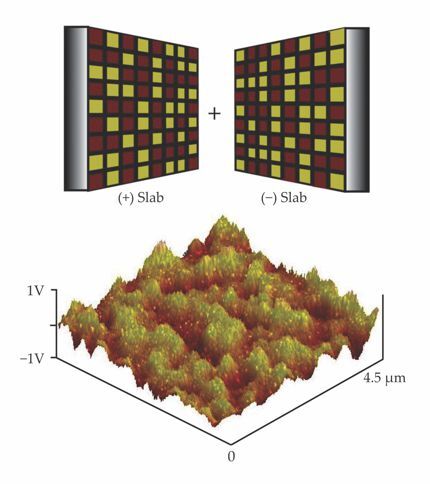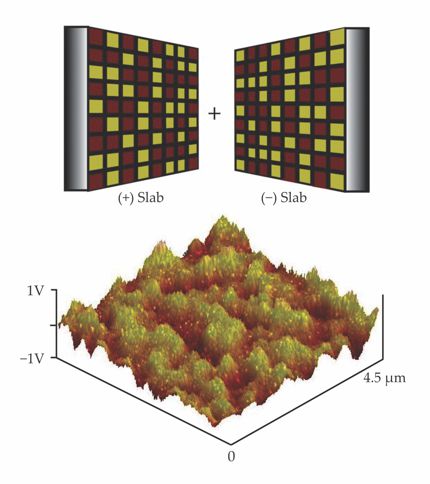A nanoscale mosaic model of static electricity
DOI: 10.1063/PT.3.1206
A nanoscale mosaic model of static electricity. Rub a balloon against your hair or rub any two nonconducting materials together, and as any high school physics student knows, the surfaces develop opposing static charges. Theoretical models of that process, known formally as contact electrification, have long assumed that the material properties of each surface are spatially homogeneous and that the post-contact charge distributions are uniform. If those assumptions were correct, then identical materials rubbed together should not transfer any charge. But they do, as was demonstrated by Northwestern University researcher Bartosz Grzybowski and colleagues roughly two years ago with identical polymer slabs. They predicted then that charge is transferred through a random mosaic of oppositely charged submicron-scale domains, shown in the schematic, generated by inhomogeneities in the materials’ surface properties. Now, Grzybowski and other Northwestern researchers have experimentally verified the mosaic model by imaging contact-electrified polymer slabs with an atomic force microscope; the AFM-generated surface potential map shown here revealed multiple positively and negatively charged nanometer-sized domains. Probing further, the researchers found possible evidence of surface inhomogeneities: Raman spectra indicated that some bonds were cleaved or oxidized, and x-ray photoelectron spectra of dissimilar polymer slabs that had been in contact revealed nonnative elemental peaks, which suggests material transfer. Their next goal is to probe other local surface properties to find out how bond breaking and material transfer influence domain size and overall charge. (


